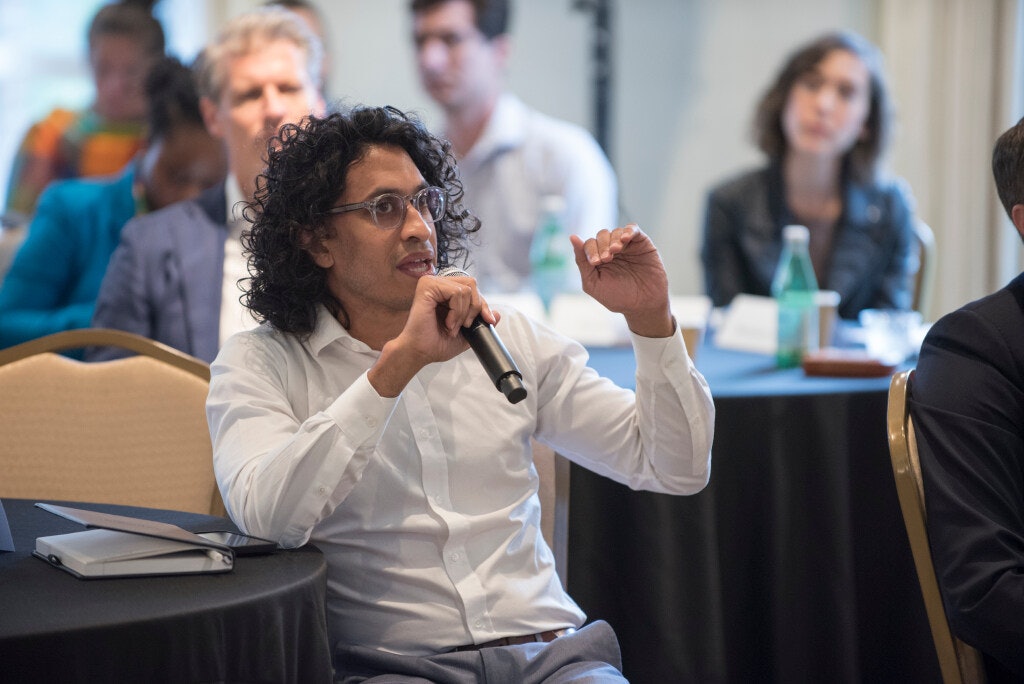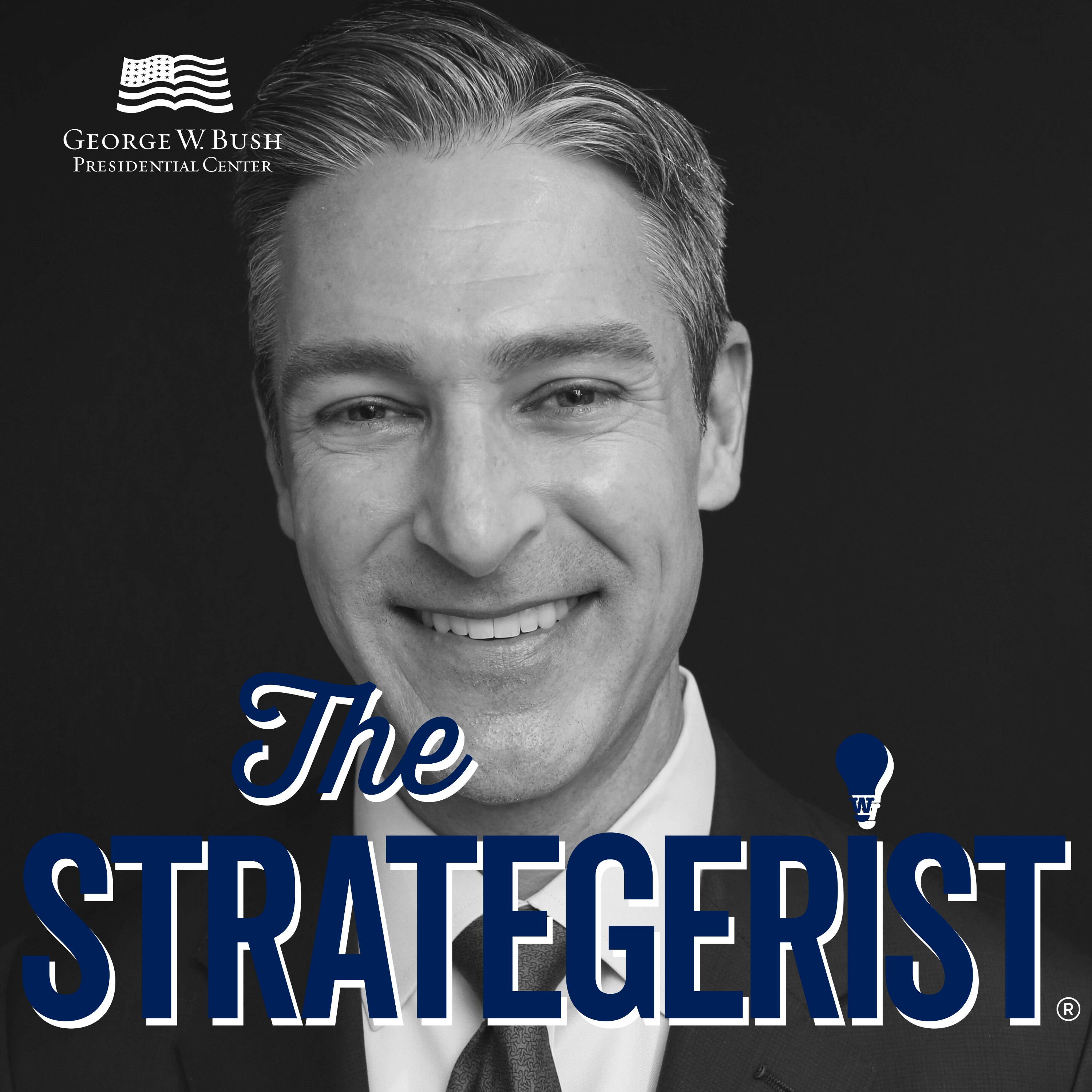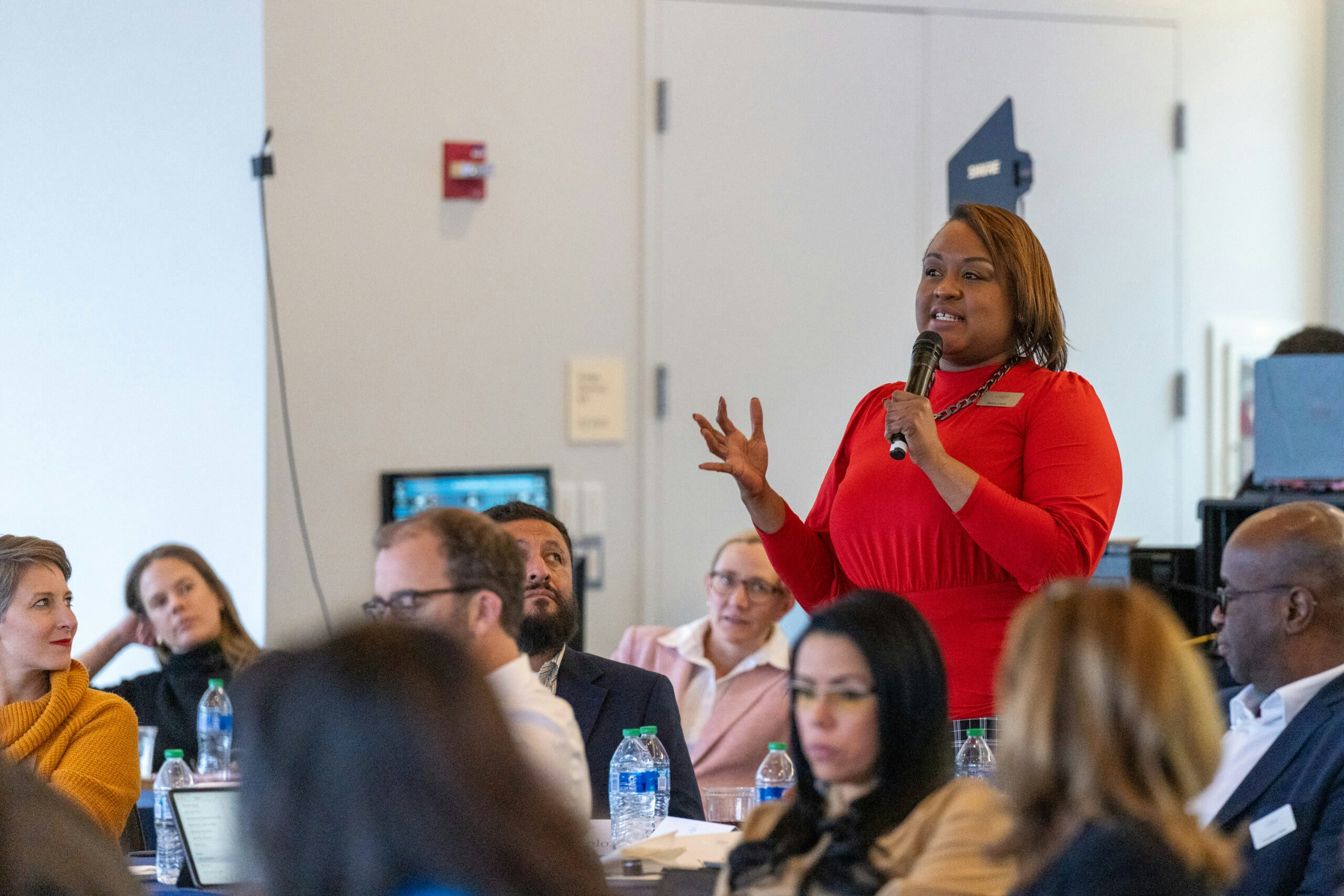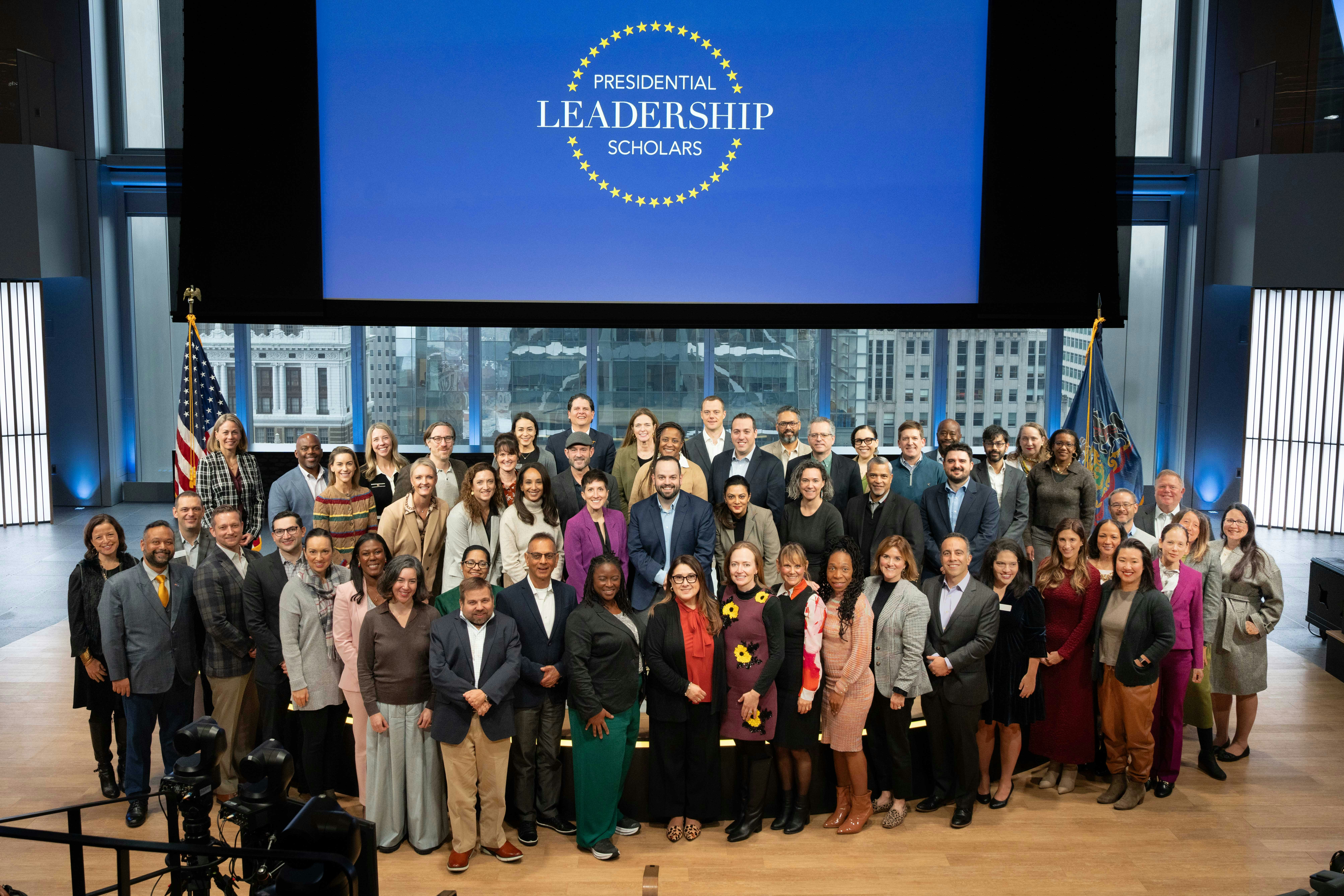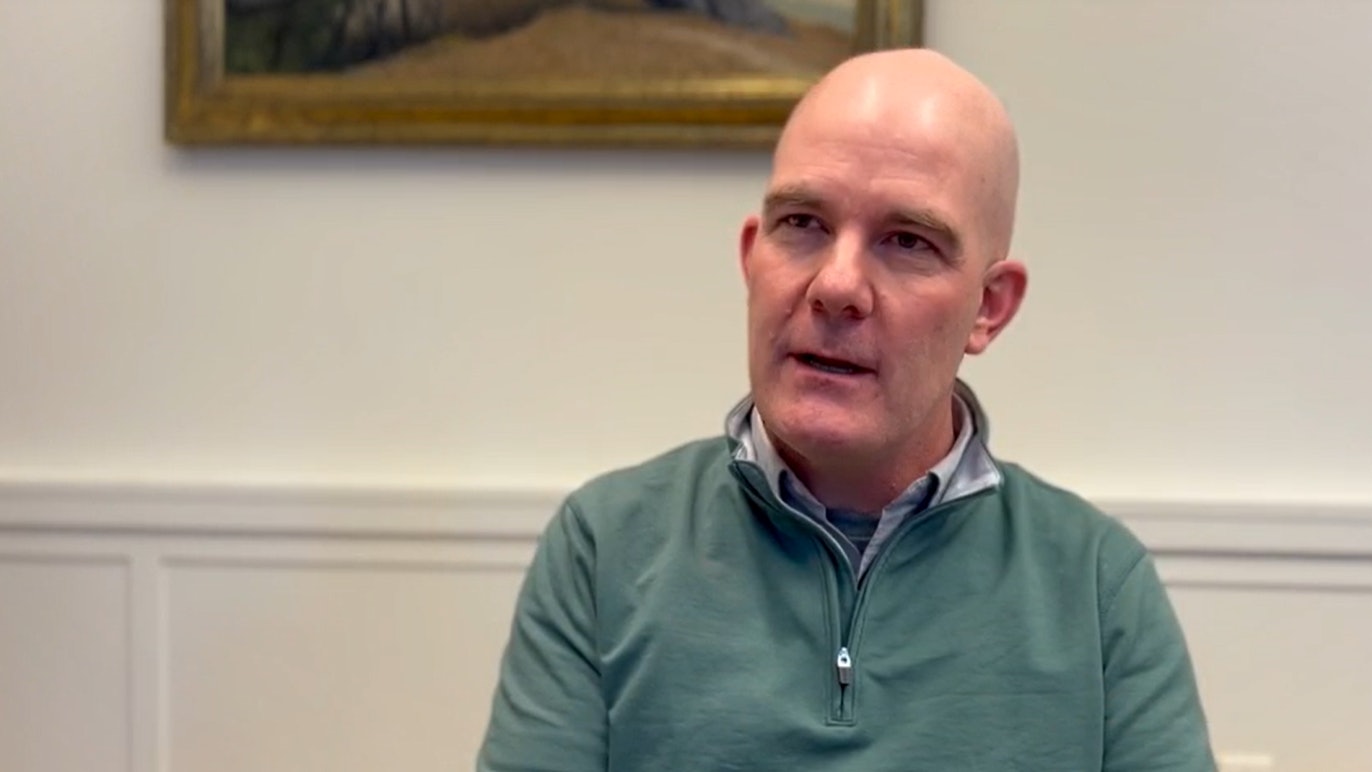Neil Vora, physician, epidemiologist, Pandemic Prevention Fellow at Conservation International, and 2023 Presidential Leadership Scholar, shares why he believes conservation is medicine and three crucial lessons he learned throughout PLS.
Please tell us a little bit about yourself.
I’m a medical doctor, epidemiologist, and conservationist. I have had incredible opportunities in life thanks to the sacrifices my parents made on my behalf, allowing me to live in this country full of opportunity. My mom and dad immigrated from India to the U.S. in 1974 and 1969, respectively. I was born in Florida, but my family and I left the country when I was 4 years old after my dad got a job as a pharmaceutical scientist at a hospital in Saudi Arabia. I lived there until I was 15, and then attended boarding school in England for my final three years of high school. I returned to the U.S. for university when I was 18 and have been here ever since.
Tell us a bit about your career trajectory.
One of the greatest privileges of my life was to serve my country in uniform as part of the U.S. Public Health Service and the Epidemic Intelligence Service of the Centers for Disease Control and Prevention (CDC). During my first seven years with CDC, I helped fight the two biggest Ebola outbreaks ever in West and Central Africa, led the team that investigated a new smallpox-like virus in the country of Georgia, and responded to numerous other threats.
Then COVID-19 struck and Mayor Bill de Blasio tapped me to lead New York City’s COVID-19 contact tracing program. The team I led of over 3,000 people traced more than 700,000 affected New Yorkers. This was an incredibly challenging experience given the scale of the disaster, and I managed thanks to three factors: 1) The importance of the mission; 2) The amazing team I worked with; and 3) My incredible life partner, Jill, who was with me at every step.
In 2021, I made the difficult decision to leave CDC to join Conservation International. Some people are surprised that a medical doctor would work at a nature-focused nonprofit organization. But I believe conservation IS medicine. When done the right way, every intervention to protect nature also protects humanity. My work is focused on investing in nature to prevent viruses from “spilling over” into people (I discuss this in a recent TED talk). Spillovers have been the source of most, if not all, pandemics since 1918 (there have been six total pandemics that have killed over 90 million people) and the source of most new infectious diseases. Spillovers are on the rise globally because of human activities such as deforestation, commercial wildlife trade, and unsafe practices when raising farmed animals; climate change is further exacerbating the threat. But the good news is that understanding these drivers of spillovers gives us a roadmap to prevent them.
Please tell us about your personal leadership project.
I am part of the Preventing Pandemics at the Source Coalition (PPATS), which is composed of 20 leading global nonprofits that do health, conservation, and more. Together, we work to prevent spillovers. My PLP was focused on developing a strategic plan for the Coalition for greater impact – to help flip our public health approach to infectious diseases from being reactive to one that is more proactive. The standard public health model is to wait for outbreaks to occur, with the hope that they can be rapidly contained through public health measures such as contact tracing and vaccines. But it’s rarely that easy. Maybe a virus, like the one that causes COVID-19, spreads between people before they know they’re sick. Maybe people choose to not take a safe and effective vaccine. And, before long, the outbreak grows into an epidemic or even pandemic. There are also major equity concerns about this approach, because the tools of response rarely get into the hands of those in greatest need fast enough. In contrast, prevention benefits everyone, everywhere. Our view is that when the stakes are this high, society needs to invest in comprehensive solutions that span the spectrum of prevention, preparedness, and response.
Please give us an update on what you have been working on since completing the Presidential Leadership Scholars Program.
Most of my work since completing PLS has been focused on co-chairing a scientific Commission on Prevention of Viral Spillover for The Lancet, one of the world’s leading medical journals, and PPATS. The commission is composed of 28 leaders in a range of different fields, including anthropology, ecology, economics, human medicine, Indigenous health, policy, veterinary medicine, virology, wildlife trade, and more. I am proud of the diversity of this group, with half coming from low-income countries and half being women. The commission’s goal is to mobilize global decision-makers and implementers to take transdisciplinary action to limit viral spillovers through research, policy, law, and practice – thereby reducing the risk of future pandemics. This commission will show that these same solutions to prevent viral spillovers have significant benefits for climate, biodiversity, and equity. In other words, we will demonstrate the possibility and value of addressing interconnected threats simultaneously.
Which lessons learned during the Presidential Leadership Scholar program have stayed with you the most, and how have you put them into action?
PLS was an incredible experience. There are three lessons that stand out. First, from Mike Hemphill: “The journey is the destination.” Success doesn’t come easily when dealing with existential threats such as climate change and pandemics, but there is tremendous joy in doing the work itself. Second, when I disagree with someone, I ask myself a question that Mike frequently asked: “Why would a reasonable person believe that?” I work with so many talented people every day who come from many different professional and personal backgrounds, and we often have different cultures, understandings, and approaches to the same problem. So asking myself this question helps to remind me that it’s okay to disagree. Third, I strive to be at the intersection of these three questions posed by Michael O’Leary:
- What brings me joy?
- What am I good at?
- What does my community need from me?
It feels like I won the lottery that my current line of work brings me to that intersection every day.
What drives your passion for your work on infectious diseases, climate change, and conservation?
I first learned about public health through my dad, who survived smallpox as a kid. As a child myself, I saw the legacy that smallpox left in the form of scars on his face that he still has to this day. He was the one who introduced me to the field of public health by telling me the story of smallpox eradication. Then, I watched the movie Outbreak as a teenager, and I decided that I would one day wear a hazmat suit and chase dangerous diseases for the CDC. But I’ve also always loved animals and nature. My experience fighting outbreaks around the world for more than a decade has shown me that there is no human health, animal health, or environmental health. There’s just One Health. I am so unbelievably lucky that I have a job that allows me to combine all of these passions, and I have never been more hopeful for the world. Every day I get to work with people who have dedicated themselves to protecting nature for people, and we have so many great solutions at our fingertips already to turn the situation around.
You recently wrote an op-ed for MedPage Today on how climate change should be weaved into health education. Discuss how knowledge of climate change affects the care patients receive?
The way that many, if not most, people will experience climate change is through the impact on their health. Climate change exacerbates chronic diseases (e.g., asthma), worsens mental health (e.g., eco-anxiety), increases transmission of infectious diseases (not just viral spillovers, but also others such as fungal diseases, as I wrote about in the New York Times last year), and more. I saw the direct impacts that natural disasters can have on people back in 2017 when I led the delivery of essential services for dialysis-dependent “climate refugees” from the U.S. Virgin Islands after Hurricane Maria. For months, these unfortunate people were stuck in a hotel in Atlanta hundreds of miles from home because all dialysis centers on the islands had been wiped out. In fact, climate change is expected to cause 14.5 million deaths by 2050. Society must start treating the climate crisis as the health crisis that it is. One of the greatest tragedies in this story is that the toll is inherently inequitable because the people least responsible for climate change are the ones most susceptible to its adverse effects. But I am inspired because I am seeing a growing movement to accelerate joint action on climate and health. In fact, I was just in Azerbaijan to meet with government officials and other advocates in the lead-up to COP29 (the big annual United Nations climate conference that is being held there this year) to identify ways to get more attention to this critical nexus.

